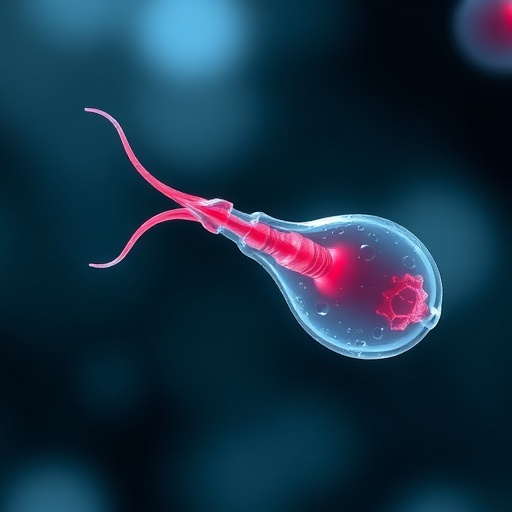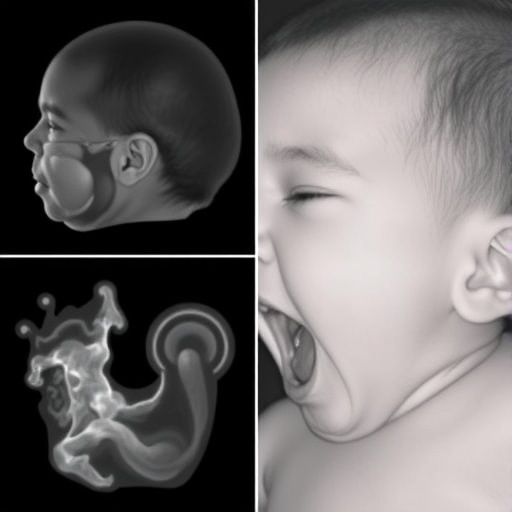
In a groundbreaking study that is poised to reshape our understanding of male infertility, researchers have identified a critical genetic factor that governs the structural integrity of sperm flagella. The absence of the gene Rnf126 has been shown to induce severe morphological abnormalities in sperm flagella, effectively causing male infertility. This discovery unveils a layer of complexity in the molecular mechanisms underlying sperm motility and fertility, providing fresh avenues for therapeutic interventions.
Sperm motility is essential for successful fertilization, relying heavily on the proper formation and function of the flagellum—the whip-like tail that propels sperm toward the egg. The Rnf126 gene encodes an E3 ubiquitin ligase, a protein that plays a crucial role in targeted protein degradation through ubiquitination, a cellular housekeeping process. Until now, the involvement of Rnf126 in sperm flagellar development had remained elusive, but this new research elucidates its indispensable role in maintaining structural fidelity.
Using advanced genetic knockout models and cutting-edge microscopy techniques, the research team meticulously analyzed the ramifications of Rnf126 deficiency. The results were striking: sperm cells devoid of Rnf126 featured multifaceted defects in the flagellar architecture. Typically, sperm flagella exhibit a “9+2” microtubule arrangement, a conserved structural pattern critical for flagellar motility. However, in Rnf126-deficient sperm, this configuration was disrupted, leading to disorganized axonemal complexes, misplaced dynein arms, and fragmentation of the fibrous sheath.
Such ultrastructural deformities are not trivial. The fine-tuned orchestration of these components underpins the flagellum’s ability to generate the sinusoidal waveforms necessary for swimming. Impairments in these elements culminate in drastically reduced motility or complete immobility, rendering sperm ineffective in penetrating the oocyte’s protective layers. This mechanistic insight directly links the molecular deficiency to a physiological outcome: male infertility.
The study’s methodology involved both in vivo and in vitro analyses. Male mice lacking the Rnf126 gene exhibited dramatically diminished fertility rates, despite otherwise normal health profiles. Examination of their sperm under electron microscopy revealed abnormalities in almost every, flagellar substructure. Complementary cell culture experiments corroborated these findings, demonstrating that Rnf126 is integral to flagellar protein quality control during spermatogenesis.
Further probing into the molecular pathways unraveled that loss of Rnf126 disrupts the ubiquitin-proteasome system within developing sperm cells. Normally, Rnf126 tags defective or surplus proteins for degradation, preventing their accumulation, which could otherwise hinder the assembly or stability of flagellar components. Without this regulatory function, defective proteins persist, leading to malformed flagella.
Moreover, the researchers found that the absence of Rnf126 perturbs mitochondrial sheath formation surrounding the midpiece of the sperm tail. Since mitochondria supply ATP to fuel flagellar beating, any irregularities in their arrangement compromise energy availability. This dual effect—not only structural distortion but also metabolic dysfunction—amplifies the infertility phenotype observed.
Importantly, the findings have profound clinical implications. Male infertility affects an estimated 7% of men worldwide, and a sizable fraction remain idiopathic with unclear causes. Identifying Rnf126 as a pivotal factor opens new diagnostic opportunities. Genetic screening for Rnf126 mutations or expression levels could become a valuable tool in fertility clinics, improving prognostic accuracy and guiding personalized treatment strategies.
Therapeutically, targeting pathways modulated by Rnf126 or compensating for its absence might eventually restore sperm motility. Small molecules designed to mimic Rnf126 activity or enhance ubiquitin-mediated quality control could be envisioned. Such interventions would address one of the root causes of male infertility rather than merely treating symptoms or resorting to assisted reproductive technologies.
The study also invites revisiting the evolutionary conservation of flagellar biogenesis mechanisms. Given that Rnf126 is ubiquitously expressed across species, its role in reproductive biology may extend beyond mammals. Comparative studies could uncover universal principles governing sperm development and motility, providing broader biological insights.
Furthermore, this work signals a paradigm shift by linking E3 ubiquitin ligases to cytoskeletal patterning in gametes, an area that previously lacked substantial evidence. It broadens the functional repertoire of ubiquitination beyond traditional roles in cell cycle control and protein turnover, highlighting intricate crosstalk between degradation pathways and structural assembly.
This discovery aligns with emerging trends emphasizing the importance of post-translational modifications in reproductive health. Dynamic protein regulation during spermatogenesis ensures precise timing and localization of key factors. The disruption caused by Rnf126 loss exemplifies how subtle molecular perturbations cascade into macroscopic pathology.
Given the complexity of sperm tail formation, the research team plans to continue investigating downstream targets of Rnf126 and interaction networks involving other ubiquitin ligases. Such endeavors will further delineate the multifactorial framework underpinning fertility and may uncover new molecular nodes amenable to intervention.
In addition to medical ramifications, these insights deepen our comprehension of male gamete biology and the delicate orchestration required for human reproduction. Understanding infertility at the molecular level empowers both patients and clinicians, fostering hope for innovative therapies and improved outcomes.
Ultimately, this landmark study spotlights Rnf126 as a linchpin in sperm flagellar architecture and function, revealing a novel molecular cause of male infertility. Its impact resonates across biomedical research and clinical practice, marking a significant leap forward in tackling a pervasive reproductive challenge.
Subject of Research: Male infertility caused by absence of the Rnf126 gene leading to structural abnormalities in sperm flagella.
Article Title: Absence of Rnf126 causes male infertility with multiple morphological abnormalities of the sperm flagella.
Article References: Wang, S., Qin, Z., Liu, J. et al. Absence of Rnf126 causes male infertility with multiple morphological abnormalities of the sperm flagella. Cell Death Discov. 11, 251 (2025). https://doi.org/10.1038/s41420-025-02432-w
Image Credits: AI Generated
DOI: https://doi.org/10.1038/s41420-025-02432-w
Tags: advanced genetic knockout modelscellular housekeeping processes in reproductionE3 ubiquitin ligase role in fertilityflagellar motility mechanismsgenetic factors in sperm motilitymicrotubule arrangement in spermmolecular mechanisms of male fertilitymorphological abnormalities in spermRnf126 deficiency and male infertilitysperm cell architecture defectssperm flagella structural integritytherapeutic interventions for infertility





